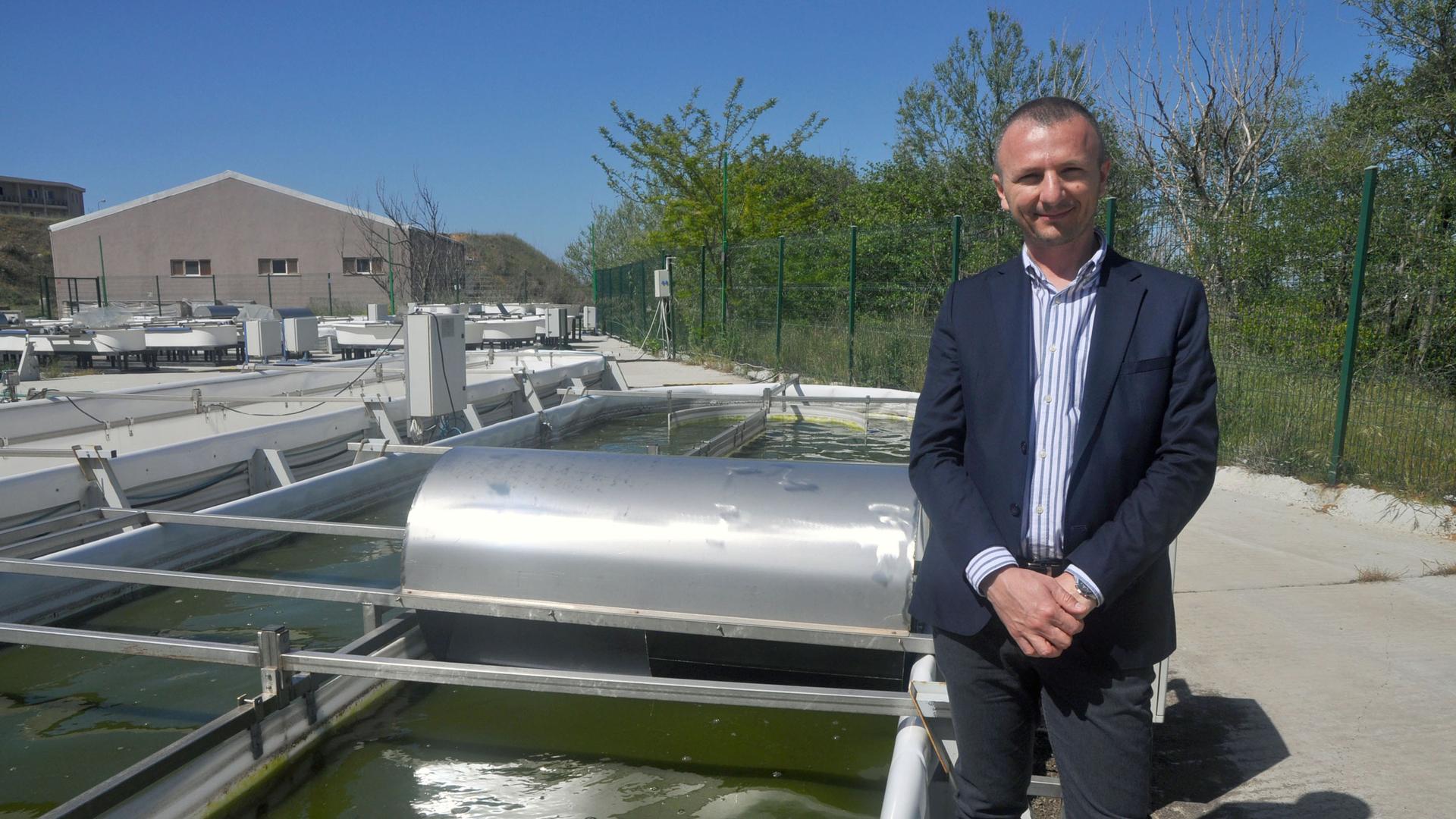In a lab situated just steps away from the Black Sea, scientist Berat Haznedaroğlu is on a mission to turn algae into biofuel.
Here, long pools of cloudy, green algae swirl under the hot sun in the lab’s greenhouse with the help of a squeaky motor.
“Right now, they’re just getting fat,” said Haznedaroğlu, who is the director of the Istanbul Microalgae Biotechnologies Research and Development Center. “As you can see they’re just using air — carbon dioxide and sunlight.”
This project, based at Boğaziçi University, is Türkiye’s first initiative to turn algae into fuel for airplanes. It’s also — Haznedaroğlu believes — the first carbon-neutral algae biofuel lab in Europe.
Related: Biomass energy may soon lose its green label in the EU
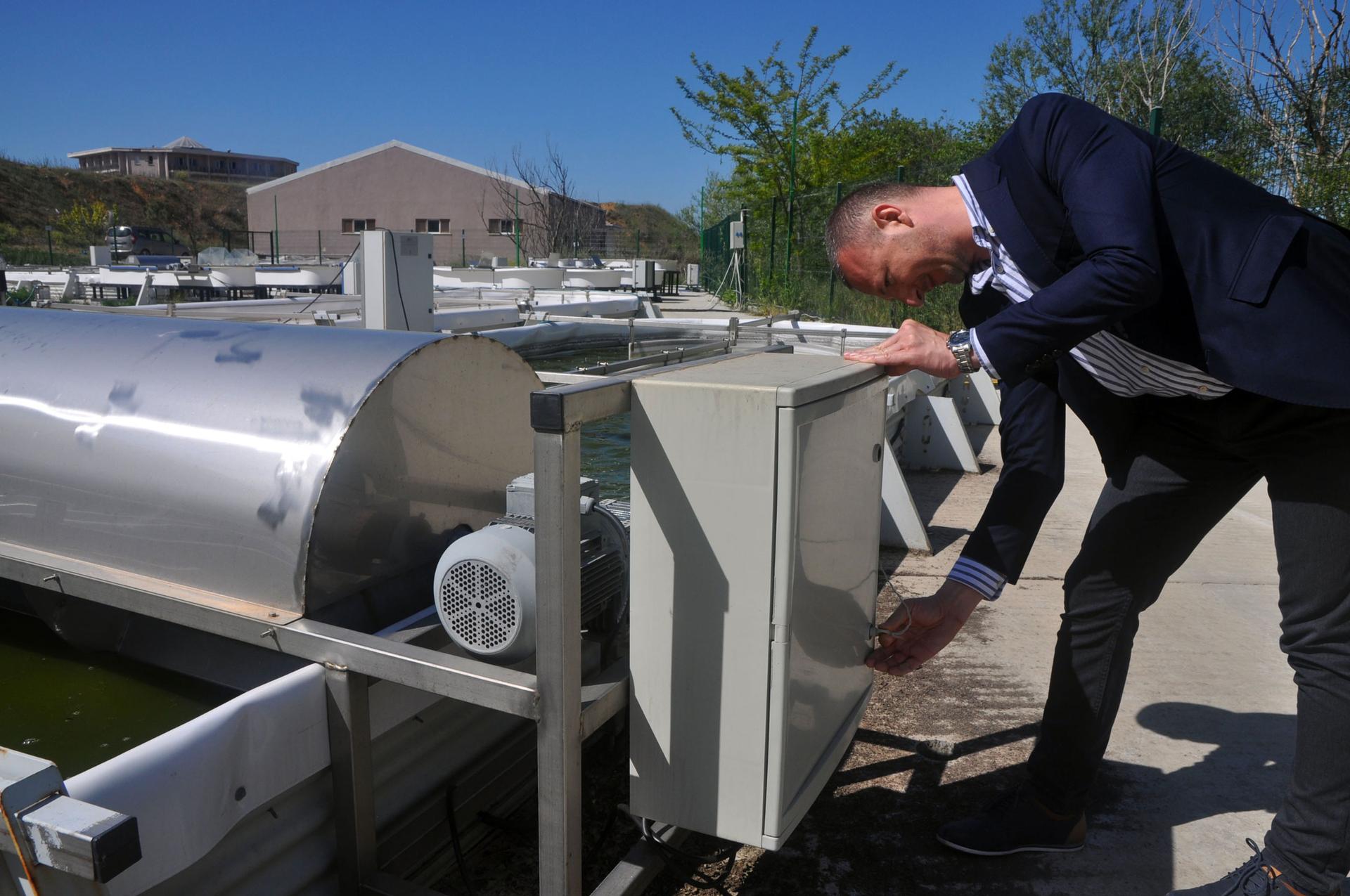
This particular strain of algae is jam-packed with fatty lipids — like the rib-eye steaks of the plankton world. The fatter the algae, the more biofuel they can create.
But producing algae biofuel to scale is easier said than done.
“These guys are microscale, so you need a little more expensive equipment and also a lot of energy,” he said.
Haznedaroğlu and his team drain the algae pools into large metal tanks and then use ethanol and chloroform to break the algae down into fatty acids.
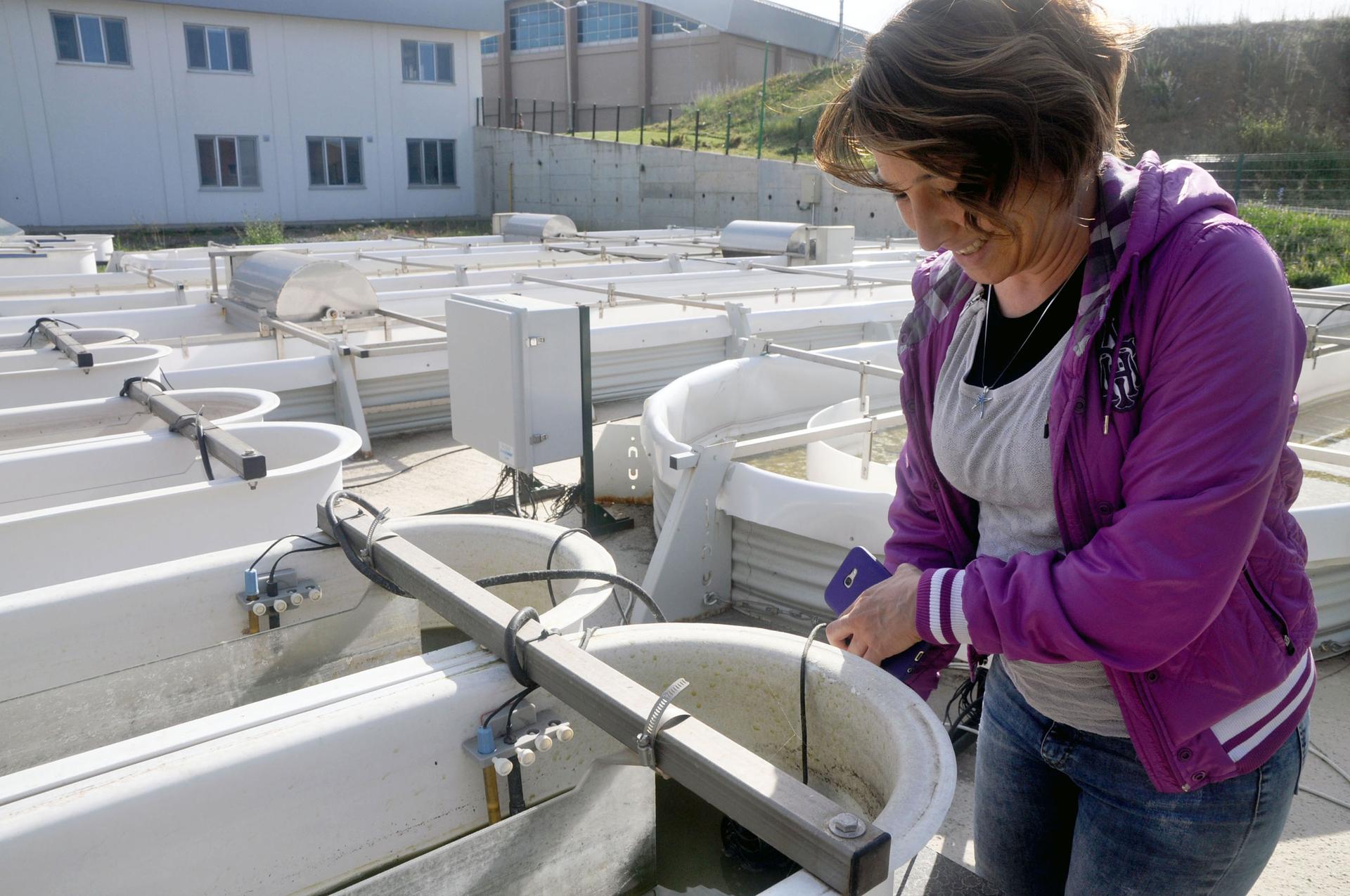
The resulting oil is checked for quality, and sent to a refinery nearby to be made into jet fuel.
“For biofuel you just have to grow a lot of [algal]-biomass,” Haznedaroğlu said.
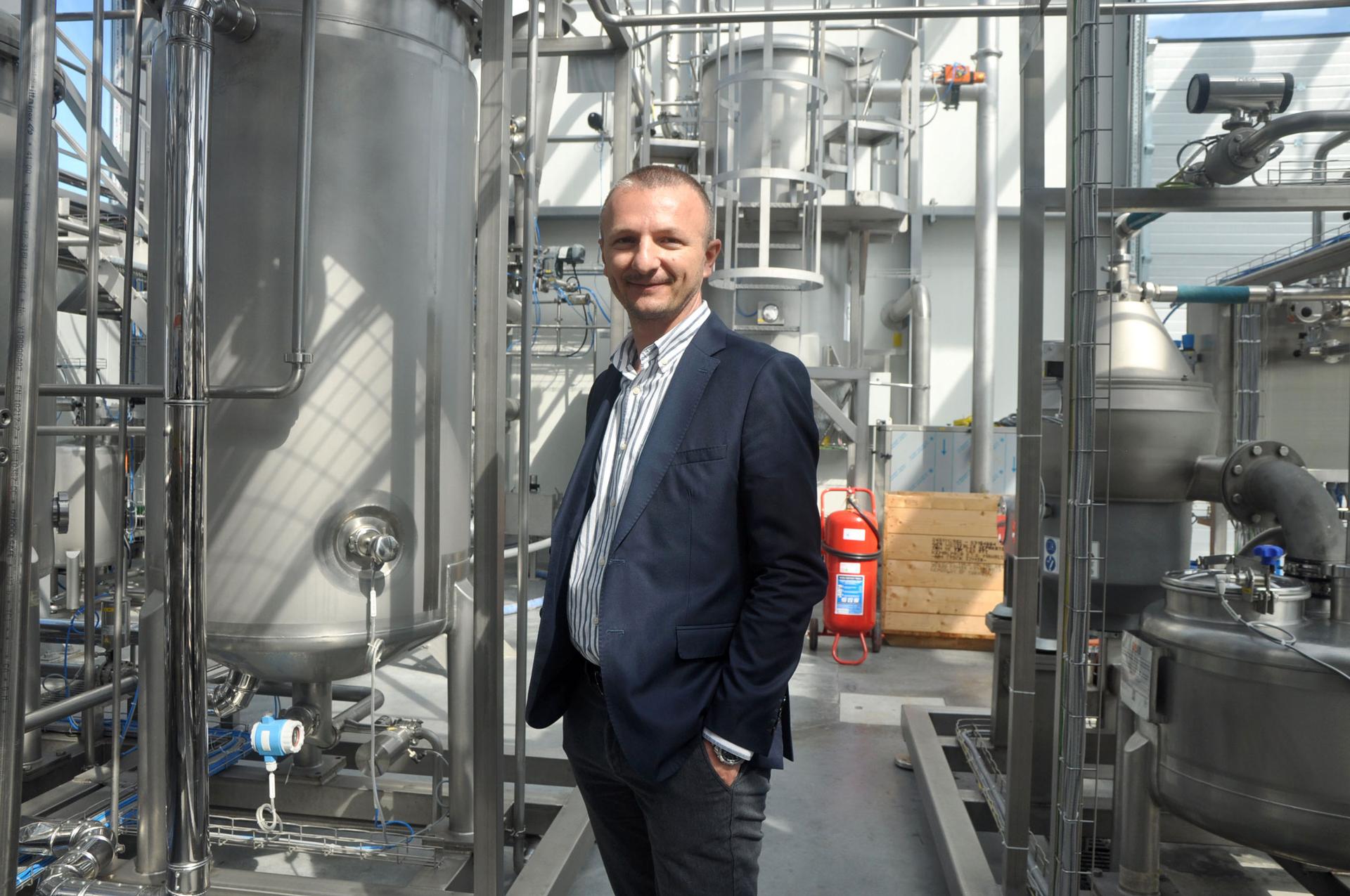
‘It’s a supply and demand issue’
Airline travel is currently responsible for about 2.5% of global gas emissions. But batteries large enough for long-haul flights would likely be too heavy to be practical, so solar and wind are not generally considered to be an option.
European airlines are clamoring for algae-based fuels to meet European Union sustainability goals, with several airports — including in Los Angeles, Brisbane and Stockholm — offering regular distribution of sustainable aviation fuels, or SAFs.
Algae biofuels are considered renewable because the algae absorb carbon while growing — even more efficiently than corn and soy.
Regulators have approved algae-based biofuels to be blended with conventional jet fuels in a 50/50 ratio, without any modification into airlines’ jet engines.
But there’s not quite enough of it yet.
Without government incentives, algae-based jet fuel costs about $2,500 to $3,000 per ton — about three times the price of its conventional counterparts.
Still, producers have a hard time keeping up with demand.
Just one of Haznedaroğlu’s 2,600-gallon tanks can only grow enough algae for 15 to 40 gallons of fuel at a time. In comparison, a Boeing 737 passenger jet burns 800 gallons of fuel in an hour.
“It’s still a supply and demand issue. You can’t grow enough algae to replace half of the [conventional jet fuel] in the whole world.”
“It’s still a supply and demand issue. You can’t grow enough algae to replace half of the [conventional jet fuel] in the whole world,” Haznedaroğlu said.
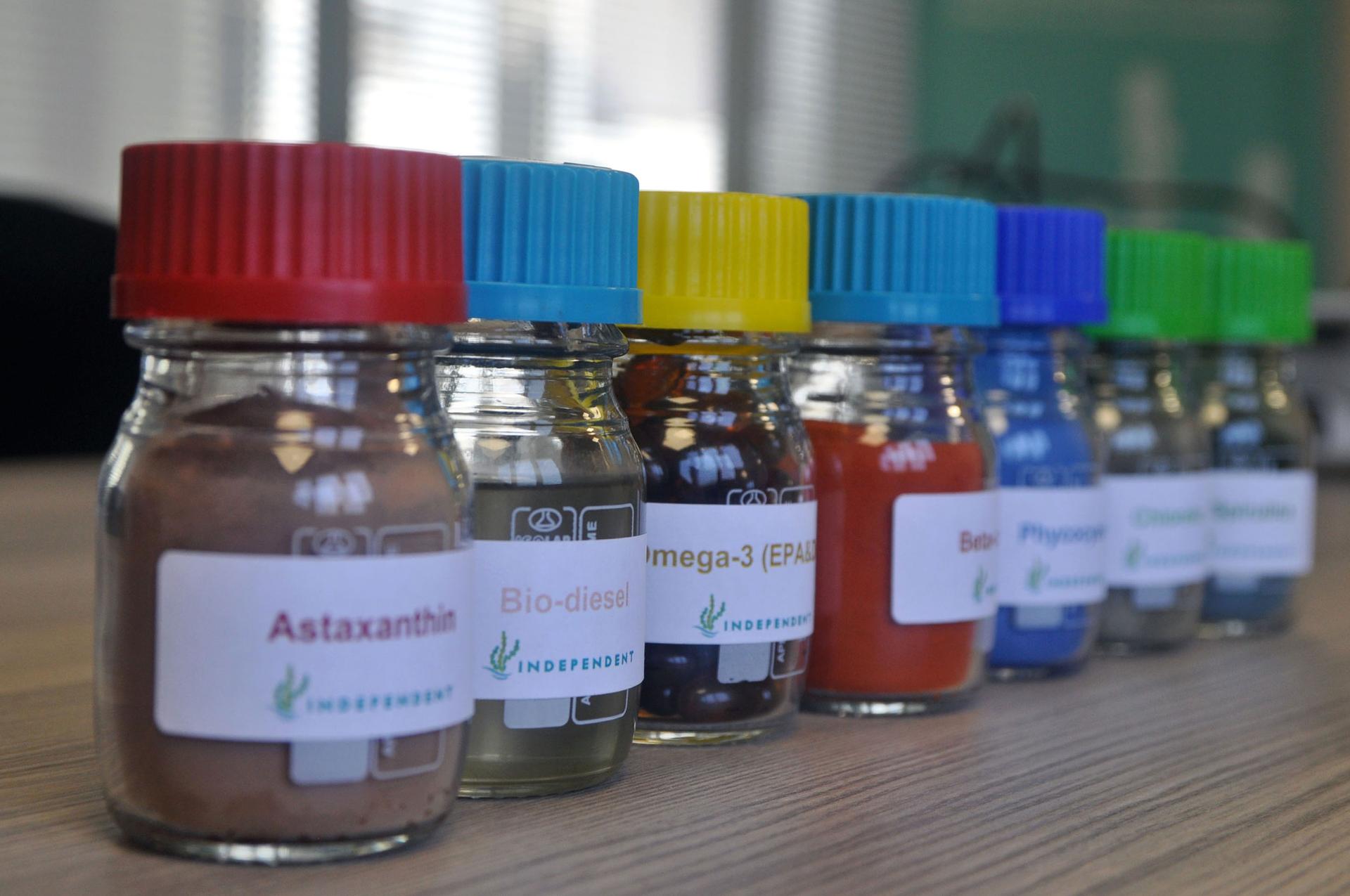
The future of algae biofuel
Almost a decade ago, algae was a darling of hedge fund investors and oil companies hoping to go green — as well as the US government.
It grows quickly, it can thrive in wastewater, and it doesn’t require valuable agricultural land and expensive fertilizers to produce it.
“So, in theory, it’s win-win-win,” said Kevin Flynn, a phytoplankton expert with the Plymouth Marine Laboratory in the United Kingdom. “But when you do the calculations, the total amount of land and nutrients needed to do this is phenomenal.”
Flynn used to believe in algae biofuel as a solution to help reduce carbon emissions globally.
But in 2015, he led a European algae industry initiative which concluded that to make a dent in Europe’s energy needs with algae biofuels, one would have to flood an area three times the size of Belgium to a depth of nearly a foot to grow enough of it.
Despite investor interest, algae biofuels seemed too expensive and unpredictable outside of a lab. In 2016, the price of crude oil dropped below $40 a barrel, driving markets away from sustainable fuel development efforts.
“Investors lost interest, practically overnight,” said Rebecca White, a microbiologist who now heads the Algae Biomass Organization, a Minnesota-based industry group. “It was definitely a bubble, and it definitely burst.”
At the time, White worked for San Diego-based Sapphire Energy and saw how investors were promised rapid timelines to scale up production, despite glaring technical problems.
“There was a lot of hype … and then when it came down to the work, it was much harder than anticipated.”
“There was a lot of hype … and then when it came down to the work, it was much harder than anticipated,” she said. “They couldn’t harvest it efficiently.”
But in recent years, many of those technical issues have been resolved, White said. Companies such as Neste and Honda are reentering the industry with algae biofuel initiatives.
Haznedaroğlu said his goal is to see the price of algae-based fuel down to $1,000 per ton — a price point that he believes would be low enough to compete with conventional jet fuel.
One way is to offset the costs by selling other algae-based products, like supplements and animal feed. The lab has a separate greenhouse with an enclosed tube system for food-grade algae products.
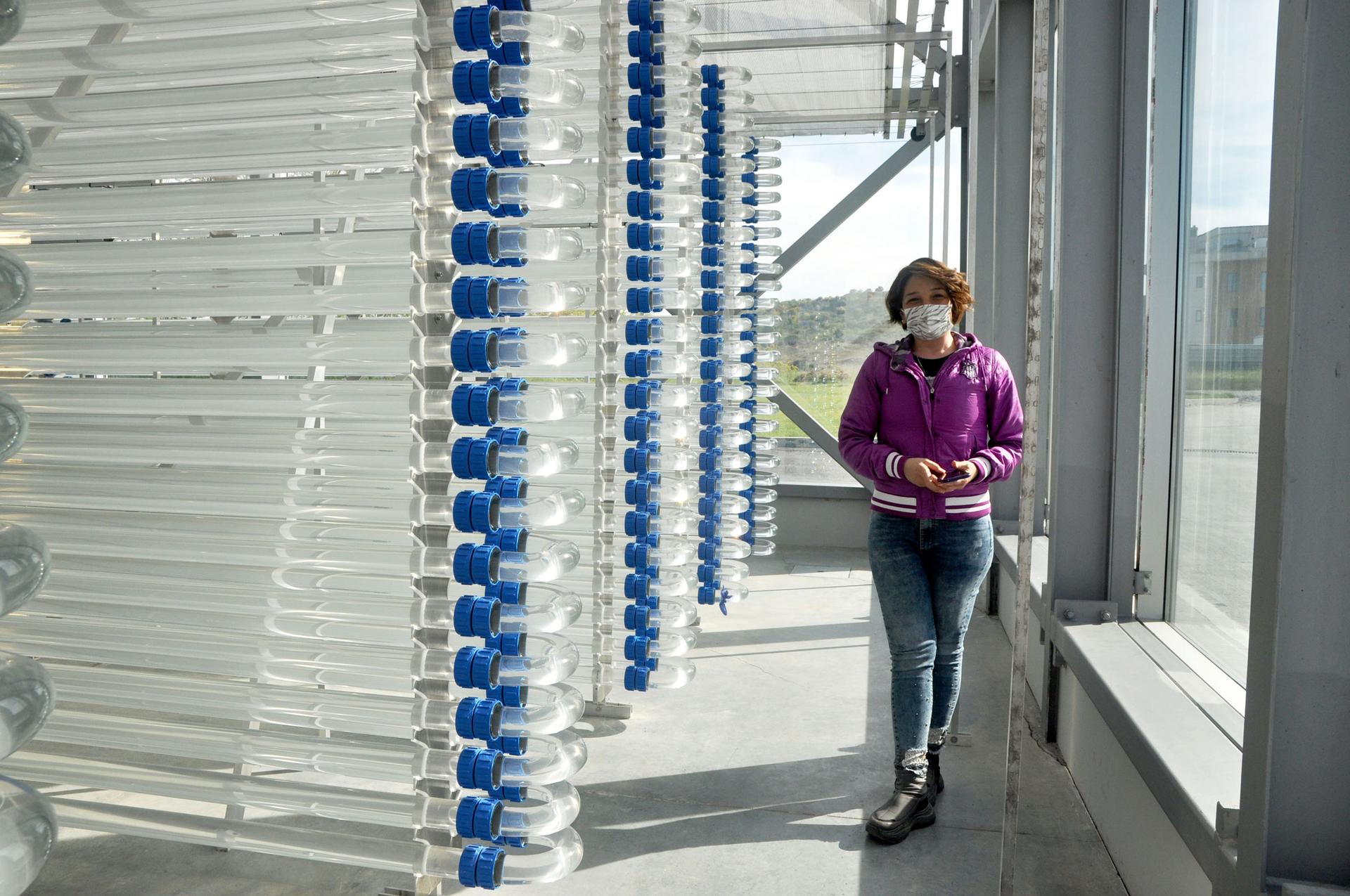
“Fuel is the cheapest product you can get from algae — and by cheapest, I mean the lowest-value product,” Haznedaroğlu said. “The other pigments [food-grade algae products] go for like, 2,000 euros [about $2,129] per kilogram.”
Haznedaroğlu said he puts faith in algae because it can grow almost anywhere.
“Anybody can grow algae, we just need to realize that we need to grow a lot.”
“Very easily, you can open a trench and put a very basic liner. There you have a pond. Anybody can grow algae, we just need to realize that we need to grow a lot,” he said.
At the end of the year, Haznedaroğlu’s team will have its first real test: A demonstration flight, taken by Turkish Airlines, with up to 5% of its fuel provided by their algae lab.
He hopes it’s just the start.
“We just need to take baby steps,” he said.
